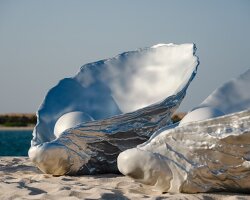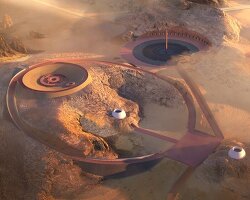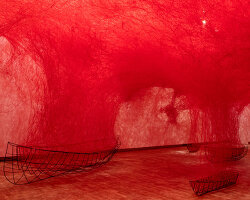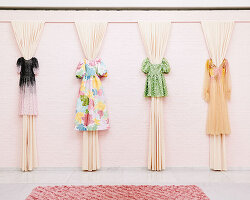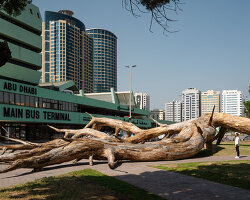in the garden of the kronprinzenpalais, the crown prince’s palace in the center of berlin, lies the schinkel pavillon — an art institution with an exceptional architectural history. built in 1969 by richard paulick, the building’s floor-to-ceiling windows and octagon-shaped hall open up to a panoramic view of berlin’s historic center: museum island, friedrichswerder church, as well as the remains of the bauakademie (building academy) by karl friedrich schinkel. schinkel pavillon is run by nina pohl as a platform for contemporary sculpture, installation, and media art, with varying exhibitions engaging with the peculiarity of the pavilion’s distinctive architecture.
a cross-generational group show presented by schinkel pavillon brings together contemporary, 19th, and 20th century artists to form a multi-layered response to the rapidly transpiring eco-catastrophe. curated by nina pohl and agnes gryczkowska, SUN RISE | SUN SET aims to reconfigure our relationship with the earth and its inhabitants through exhibited works that unfold across surreal landscapes, bio-technical hybrids, futuristic scenarios and speculative concepts. the multi-sensory experience seeks to counter the current dark season of restriction, uncertainty, and loss while addressing the collective necessity to redefine our role as part of a whole.
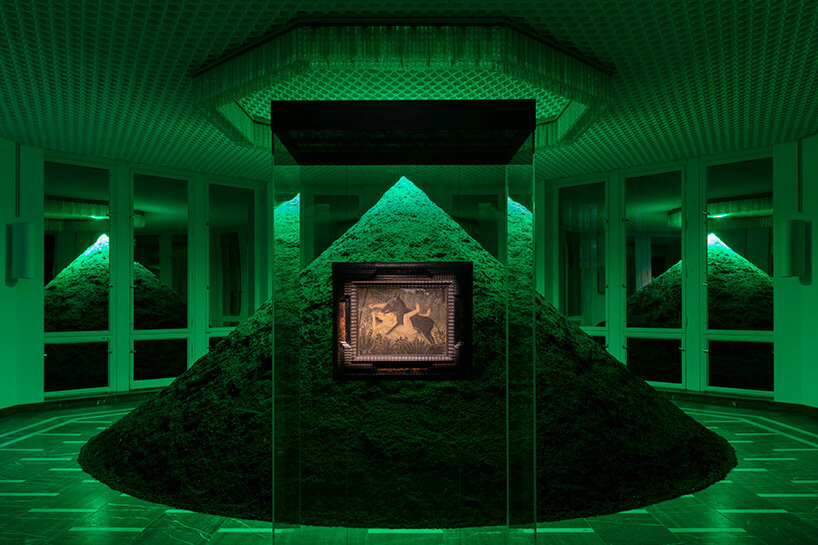
(works from front to back): henri rousseau, la belle et la bête, c. 1908
32 x 41,5 cm | oil on canvas | courtesy of staatliche museen zu berlin, nationalgalerie, sammlung scharf-gerstenberg
pamela rosenkranz, infection (calvin klein obsession for men), 2021
terra preta, scent, LED light, courtesy of the artist and sprüth magers, berlin
image by andrea rossetti © schinkel pavillon and the artists
to learn more about the exhibition at schinkel pavillon, designboom spoke with SUN RISE | SUN SET curators nina pohl and agnes gryczkowska about the world as a state of transformation, circular thinking and energy flows as ideas that informed the exhibition, and the sixth great extinction…
designboom (DB): what was the criteria in selecting the contemporary, 19th and 20th century artists for SUN RISE | SUN SET, which spans generations and geographies? what do their different voices contribute to the conversation?
nina pohl (NP): the aim was to create an exhibition or a landscape that forms a rhizomatic approach towards the issue of the fast unfolding, human-made eco-catastrophe and the precious fragility of our dying natural world. we wanted to avoid a didactic attitude and selected works that speak of the issue not directly or tangibly, but in a more psychological or perhaps surreal way, the show is more visceral than instructive. we also hoped to highlight the complexity of the problem by highlighting the inextricable links between humans, animals, plants, inanimate objects, technologies, and non-beings.

(works from front to back): henri rousseau, la belle et la bête, c. 1908
32 x 41,5 cm | oil on canvas | courtesy of staatliche museen zu berlin, nationalgalerie, sammlung scharf-gerstenberg
pamela rosenkranz, infection (calvin klein obsession for men), 2021
terra preta, scent, LED light | courtesy of the artist and sprüth magers, berlin
image by andrea rossetti © schinkel pavillon and the artists
agnes gryczkowska (AG): many of the links between artists and works appeared unexpectedly in the process of curating the show — the exhibition started living its own life, and in a way continues to do so. the fears and hopes buried within max ernst’s ‘poisoned paradises’ or henri rousseau’s jungle paintings, visions of a world far removed from human existence created by richard oelze and emma kunz’s decentralised ways of understating the world reappear in contemporary works in the exhibition. it was also crucial for us to include voices that speak of the future present of climate change, extractive capitalism, industrial toxicity, war overland from the point of view of indigenous worlds as seen in karrabing film collective’s film; ones that explore the issue of the biodiversity of the planet — neri oxman; the violently destructive nature of the oil industry — monira al qadiri; the appropriation and racialisation of the natural world — precious okoyomon, the reoccurrence of natural catastrophes in asia — ryuichi sakamoto.
NP: the aim of combining different generations and geographies was to highlight how all agents and actions contribute greatly to the whole. it was about creating links between microcosmic and macrocosmic visions.
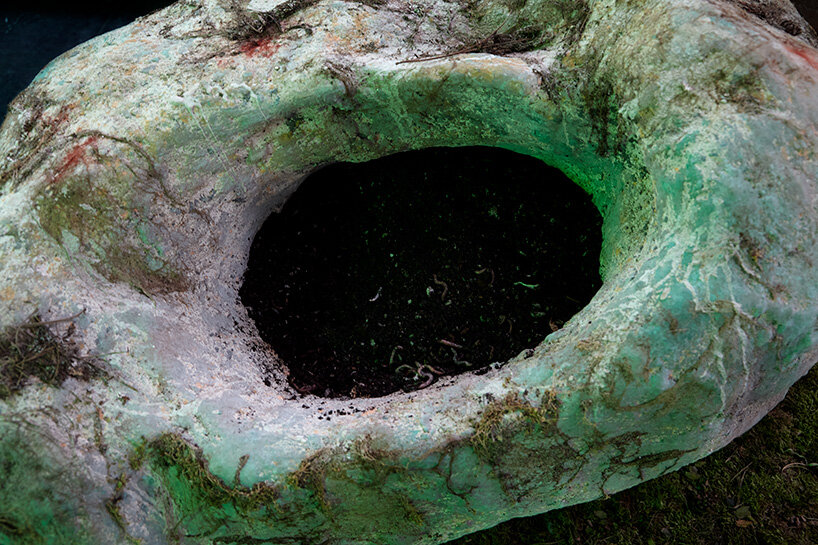
precious okoyomon, ditto ditto, 2020
63 x150 x 74 cm | rock, earthworms, moss, dirt | courtesy of the artist
image by malina heinemann © schinkel pavillon and the artist
DB: what new perspectives can be garnered from the interplay of contemporary and historic work in general, and how does the exhibition convey that?
AG: the process of highlighting interplays between the selected contemporary and historic works and forming small ‘organisms’ that shape the exhibition as a whole was an interesting journey — on a conceptual, aesthetic, and purely practical level. the works permeate through one another in a conceptual and aesthetically symbiotic way yet at times a practically destructive one. pamela rosenkranz’s infection (calvin klein obsession for men), 2021 creates a stunning backdrop for henri rousseau’s la belle et la bête, c. 1908. rosenkranz’s nutrient-rich soil is illuminated with poisonous green light and infused with calvin klein fragrance, which contains synthetically produced cat pheromones, often used in the wild to lure predatory cats into photo traps. rousseau’s la belle et la bête (the beauty and the beast) depicts an erotic play between a woman and a wolf. amidst the rapidly progressing destruction of natural ecosystems, caused by human activity, one may question who in rousseau’s ambiguous picture is the real beast?
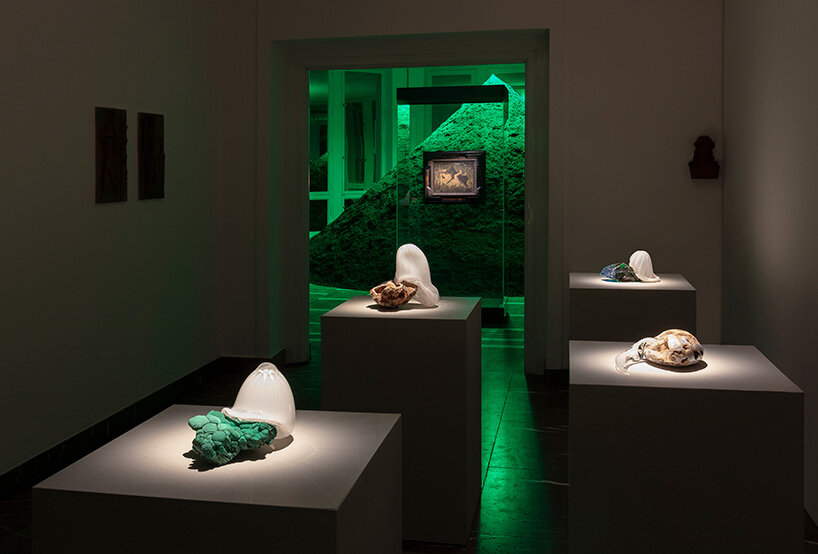
(works from front to back): rachel rose, borns, 2019
various dimensions | rock and glass | courtesy of the artist and pilar corrias gallery, london
henri rousseau, la belle et la bête, c. 1908
32 x 41,5 cm | oil on canvas | courtesy of staatliche museen zu berlin, nationalgalerie, sammlung scharf-gerstenberg
pamela rosenkranz, infection (calvin klein obsession for men), 2021
terra preta, scent, LED light, courtesy of the artist and sprüth magers, berlin
image by andrea rossetti © schinkel pavillon and the artists
NP: both rousseau and rosenkranz make tangible the fragility of the relationship between humans and nature, which can quickly shift from symbiotic to destructive. on a practical level, one piece needs to be protected from the other — the humidity of rosenkranz’s soil heap would normally destroy rousseau’s painting, which remains locked off in its climate-controlled vitrine and protected from its ‘environment’. similarly, pierre huyghe’s work is heavily inspired by max ernst’s painting, in particular swampangel, yet his circadian dilemma (dia del ojo), 2017 ‘haunts’ it back as swampangel has to be locked away in its climate-controlled vitrine, so its wild textures remain untouched by the humidity generated by huyghe’s tank.
AG: yet, all living creatures on the planet cannot be kept in their own climate, cannot be isolated from human activity, cannot be unaffected. everything comes in circles.
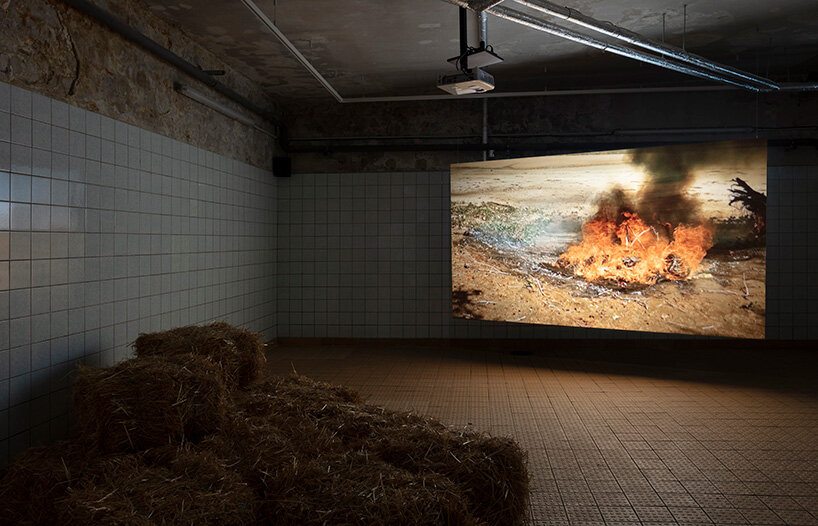
karrabing film collective, mermaids, or aiden in wonderland, 2019
video, colour (27 minutes) | courtesy of the artists
image by andrea rossetti © schinkel pavillon and the artists
DB: what are the primary themes and concerns that tie the show together, and what has fascinated you about these topics during the exhibition’s development stages?
NP: SUN RISE | SUN SET is a surreal, at points hopeless, at points hopeful vision of the possibilities of procreation and regeneration of the earth devoid of humans. the show highlights that our world is not a place, but rather a state of interconnectivity and transformation. ‘nothing is lost, nothing is created, everything is transformed’, as we learned from the 17th-century chemist, antoine lavoisier. mass can neither be created nor destroyed in a chemical reaction, it is transformed.
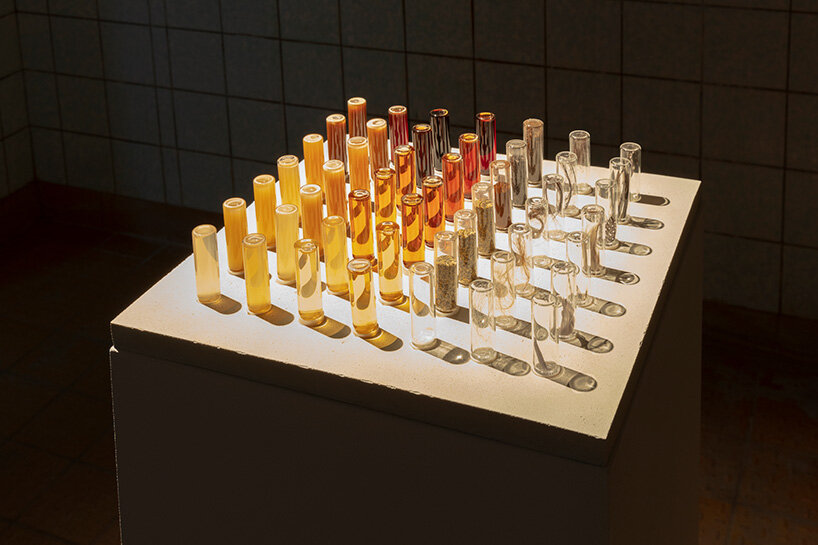
neri oxman, melanin library, 2020 | 34,8 x 34,8 x 8cm
concrete base, glass screw top vials containing a variety of organically and synthetically sourced melanin
courtesy of the artist and the mediated matter group
image by andrea rossetti © schinkel pavillon and the artists
AG: inspired by this quote, SUN RISE | SUN SET is a landscape shaped by objects, creatures, and ideas that form invisible circles and hover somewhere between transforming or waiting to be transformed, affecting or waiting to be affected. there is a lot of poetics of birth, death, eroticism, and transformative potentials, but also endless reminders that humans are responsible for the brutal modifications that have resulted in a severe geological trauma — threatening both human and nonhuman presents and futures. to quote timothy morton: ‘the notion of air conditioning is about channeling vector flows of bad air somewhere else. now, on a planet scale, ‘somewhere else’ is just the same place, you’re just moving some kind of pollution around within a system, you’re not doing anything. and what you’re doing, of course, is wasting energy’. the ideas of circular thinking and energy flows informed the exhibition in its development stages.
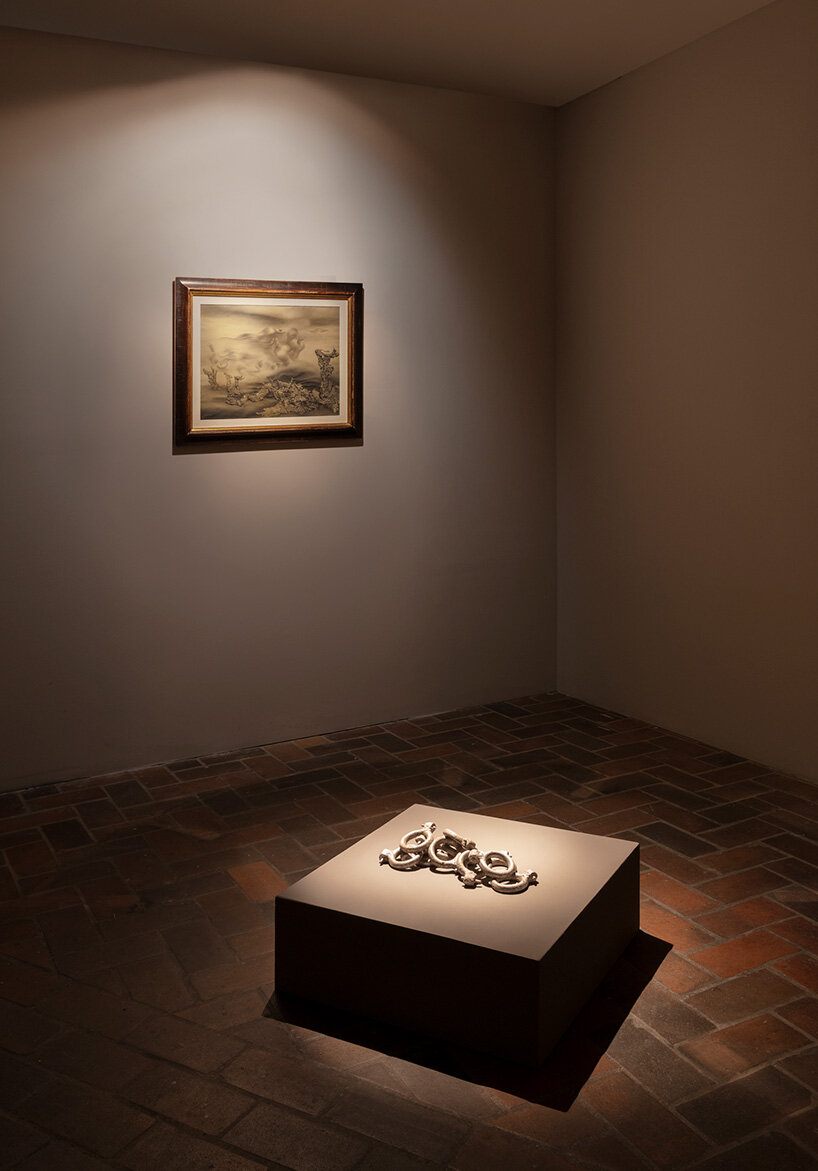
(works from front to back): dora budor, something to remind me, 2021
7,5 x 36,5 x 16,5 cm | rental bicycle | courtesy of the artist
richard oelze, baumlandschaft, 1935
42,3 x 56 cm | pencil on cardboard | courtesy of galerie brockstedt, berlin
image by andrea rossetti © schinkel pavillon and the artists
DB: how do the works on view address a collective necessity to find new ways of living in the world? what futuristic scenarios and speculative concepts are proposed?
AG: another concept that informed the exhibition is that of donna haraway’s ‘tentacular thinking’ and her viewpoint that ‘nobody lives everywhere; everybody lives somewhere. nothing is connected to everything; everything is connected to something’. the works on view underline that the tragedy of the fast advancing eco-catastrophe we are entangled in and responsible for is perhaps only serious enough when it becomes visible and tangible or when it affects us directly. the exercise of refusing to know, refusing responsibility creates a space for denial and eco-procrastination. the exhibition places the viewer at the pivot of the overwhelming sublimity of the natural world and the hovering around us feeling of impending doom. there is a multitude of futuristic scenarios presented in the show. karrabing film collective’s the mermaids, or aiden in wonderland, 2018 tells a speculative story set in the northern territories of australia, in the near future where white people will no longer be able to survive outdoors. aiden, the protagonist, was taken away to take part in a medical experiment to ‘save the white ‘race’.
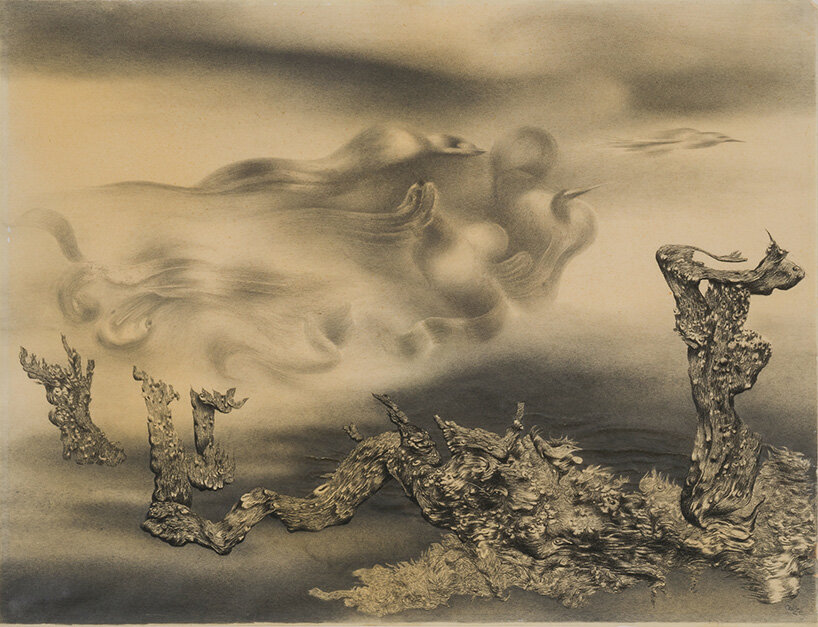
richard oelze, baumlandschaft (ca. 1935)
42,3 x 56 cm, pencil on cardboard | courtesy of galerie brockstedt, berlin | image by sebastian schobbert/berlin
NP: max hooper schneider’s fossil epizoon (dyrosaurus), 2020 is a hybrid of a fossil and a kinetic machine — born from the faint and blurry line between dead and live matter. torbjørn rødland’s nordic landscape combined with black metal subculture embraces the mysteries and the darker sides of nature and pagan-like synchronisation with the natural rhythm of the planet. emma kunz’s pendulum-created drawing and interest in natural healing encourage spirituality rooted in alternative power structures. neri oxman works on redesigning the world so it follows the principle of nature, and her melanin library, 2020 presents an early stage of her development of architecture and design using melanin. joan fontcuberta constructs supposedly organic structures that consist not of living cells but instead of pure plastic and other artifacts of the disposable society.
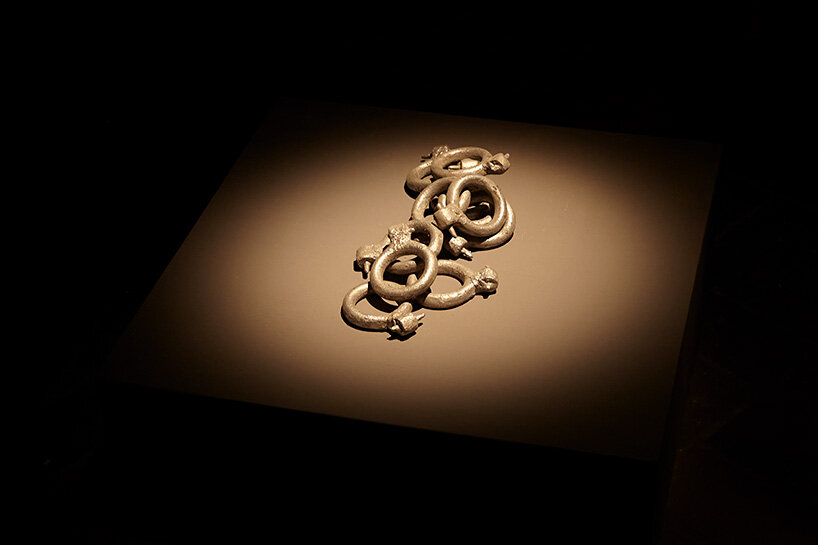
dora budor, something to remind me, 2021
7,5 x 36,5 x 16,5 cm | rental bicycle | courtesy of the artist
image by malina heinemann © schinkel pavillon and the artist
DB: how does the exhibition engage with the exceptional architecture and history of schinkel pavillon?
NP: the show opens with rachel rose’s borns, 2019 sculptures made of egg-shaped glass and rock — they capture frozen expressions of states of change and introduce some themes of the show: birth, death, transformation, the collapse, and fragility of human made structures. the theme of transformation and circles mentioned before engages with the architecture of schinkel pavillon, the octagonal shape of the main gallery spaces strengthens the concept and is additionally emphasised by the circular movement of ryūichi sakamoto’s ZURE, 2017 musical composition — constantly pulsating around the space.
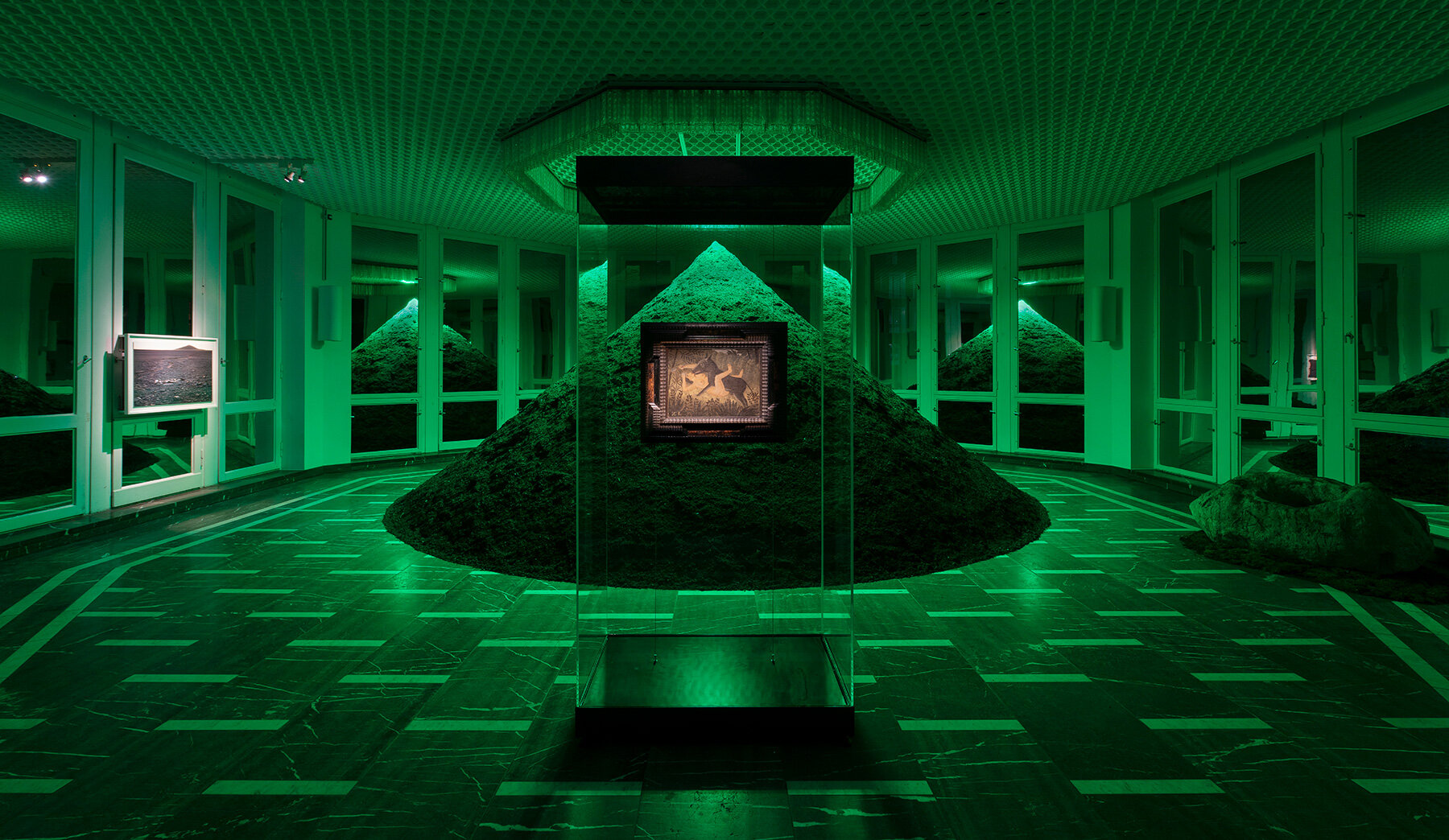
(works from front to back): henri rousseau, la belle et la bête, c. 1908 | 32 x 41,5 cm | oil on canvas | courtesy of staatliche museen zu berlin, nationalgalerie, sammlung scharf-gerstenberg
pamela rosenkranz, infection (calvin klein obsession for men), 2021 | terra preta, scent, LED light | courtesy of the artist and sprüth magers, berlin
precious okoyomon, ditto ditto, 2020 | 63 x150 x 74 cm | rock, earthworms, moss, dirt | courtesy of the artist
pierre huyghe, cerrio indio muerto, 2016 | 64 x 96 cm | framed photograph | courtesy of the artist and esther schipper, berlin
image by andrea rossetti © schinkel pavillon and the artists
AG: the exhibition plays with the labyrinthine schinkel pavillon’s lower floor (and former GDR restaurant) and uses a hidden away, ‘secret’ niche to confront the viewer with perhaps controversial rewriting or questioning of the internationally accepted art historical knowledge with works by dora budor and richard oelze. budor poses questions about the history of the readymade and the continuity of patriarchal art history, society, and environmental crisis; whereas the inclusion of oelze’s mysterious landscape questions not only our relationship to nature but also the one between the art market and the uncertain future of artists who, like oelze, do not participate in it. in the more raw back areas of the pavillion, anj smith’s nachträglichkeit unfolds in layers of decay and destruction of forest wildlife as the fast-spreading plague.
NP: the deepest ‘cavities’ of the schinkel pavillon are filled with octopus tentacles: monira al qadiri’s divine memory, 2019 and jean painlevé’s the lovelife of the octopus, 1967 – providing the visitors with poetic gems at the very ‘bottom’ of the landscape that the exhibition creates.
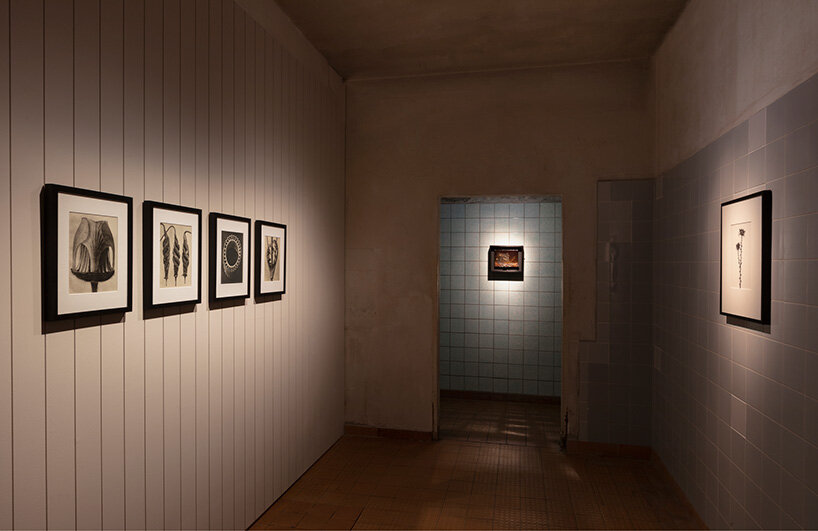
(works from left to right): karl blossfeldt, geum rivale from wunder in der natur, 1928-32 / 1942
26,8 x 19,8 cm | photogravure | courtesy of galerie kicken, berlin
karl blossfeldt, cajophora lateritia, loasacecae from wunder in der natur, 1928-32 /1942
26,8 x 20,3 cm | photogravure | courtesy of galerie kicken, berlin
karl blossfeldt, equisetum hyemale from wunder in der natur, 1928-32 / 1942
26,7 x 21 cm | photogravure | courtesy of galerie kicken, berlin
karl blossfeldt, dipsacus lacinaiatus, rough horsetail from wunder in der natur, 1928-32 / 1942
26,8 x 20,1 cm | photogravure | courtesy of galerie kicken, berlin
anj smith, nachträglichkeit, 2010
19 x 24.7 cm | oil on linen | private collection, london, courtesy of the artist and hauser & wirth
joan fontcuberta, braohypoda frustrata, 1984 / 2015
40 x 30 cm | giclée print on hahnemühle paper | courtesy of the artist
image by andrea rossetti © schinkel pavillon and the artists
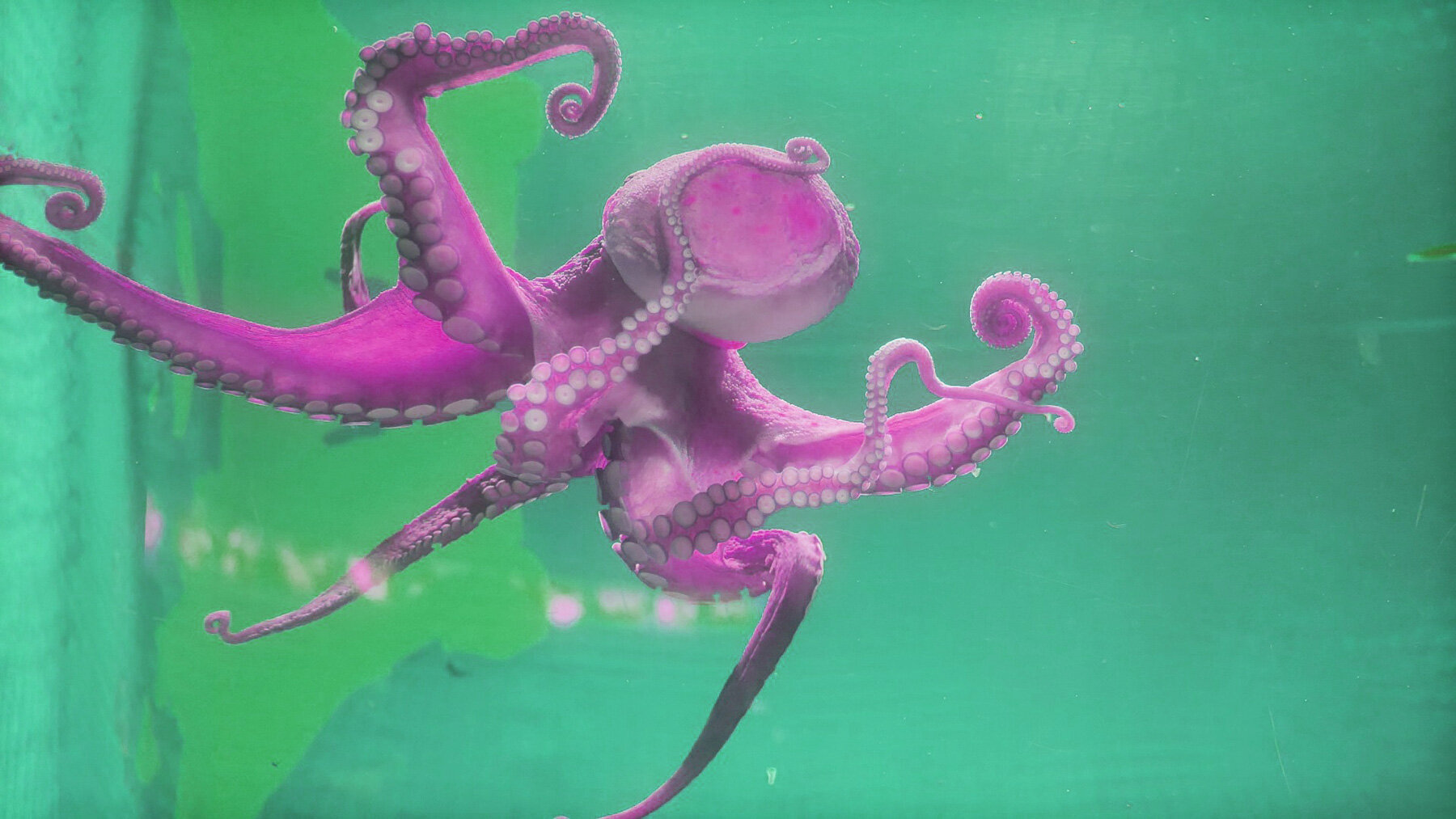
monira al qadiri, divine memory (2019) | video, 4.5 minutes | image courtesy of the artist
DB: what new outlooks on the link between humans and their nonhuman environment can be gathered from the exhibition? what do you hope visitors take away?
NP: the title — as much as it refers to the cycles and circles — the sun rising and setting, also points out an interesting aspect. the rising and setting of the sun is an occurrence that takes place from the human perspective — the sun does not rise and does not set. it is the earth and us with it that move.
AG: humans are not the epicenter of the universe and we have to remove ourselves from that position of power and superiority to prevent the eco-catastrophe which is unfolding every day, from sunrise to sunset to sunrise, into the sixth great extinction…
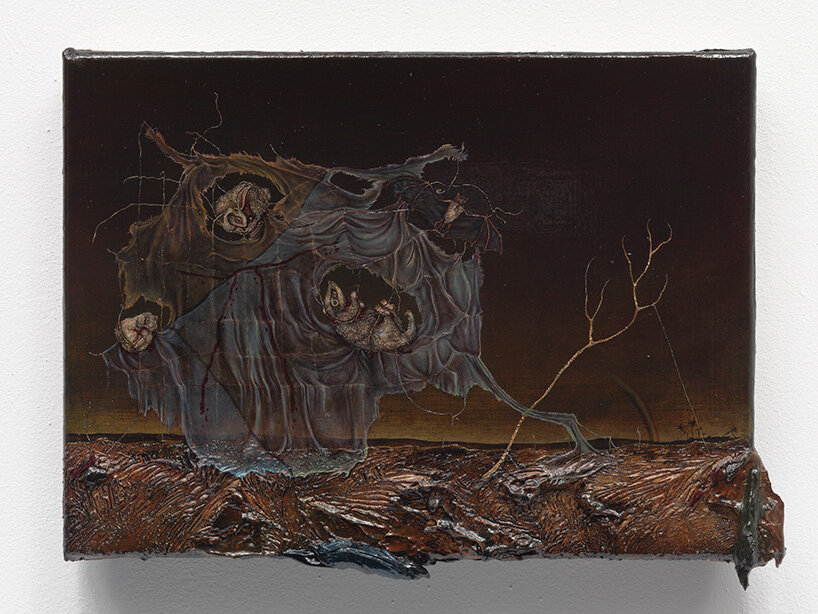
anj smith, nachträglichkeit (2010)
oil on linen | 19 x 24.7 cm (framed: 27.5 x 34 x 7.5 cm) | private collection, london
courtesy the artist and hauser & wirth | image by alex delfanne
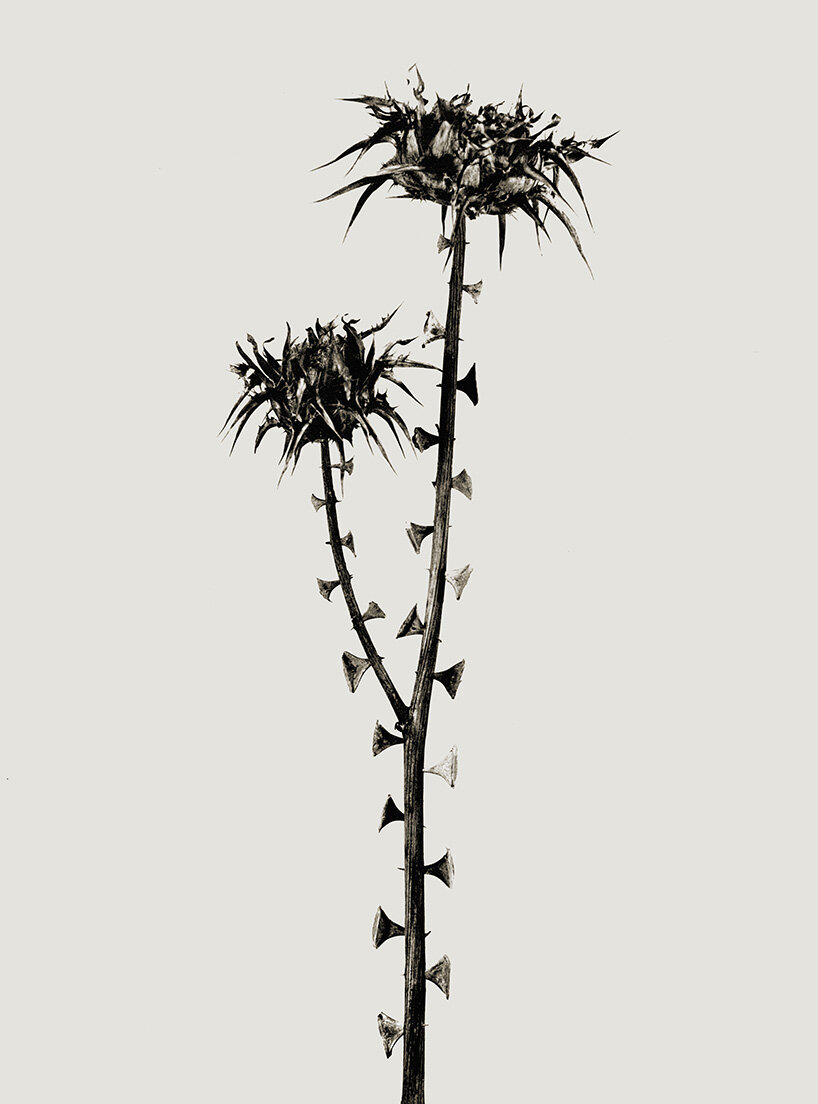
joan fontcuberta, braohypoda frustrate (1984/2015)
52 x 42 cm | sgiclée print on hahnemühle paper | courtesy of the artist
exhibition information:
SUN RISE | SUN SET
location: schinkel pavillon
dates: february 26 – july 25, 2021 (the exhibition is temporarily closed due to COVID-19)
participating artists: monira al qadiri, karl blossfeldt, dora budor, max ernst, joan fontcuberta, karrabing film collective, max hooper schneider, pierre huyghe, emma kunz, richard oelze, precious okoyomon, neri oxman, jean painlevé, pamela rosenkranz, rachel rose, henri rousseau, torbjørn rødland, ryūichi sakamoto, anj smith
curated by: nina pohl and agnes gryczkowska
curatorial assistance: kerstin renerig
